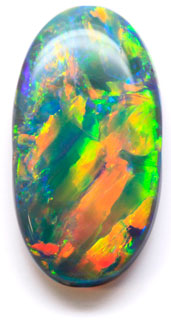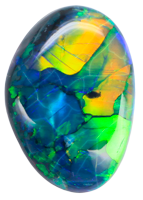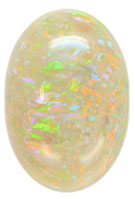 Convenient Disappearance:
Convenient Disappearance:
The Case of the Missing Opals
When
does a mysterious disappearance become convenient? How can you turn up missing
information?
What would Sherlock do?
The Facts
While traveling in Australia, a man bought two opals as an investment. When he returned to the States he had them appraised. The appraisal listed a 54.75 carat opal, with a value of $160 per carat, or $8,760; and an 18.78 carat opal, with a value of $110 per carat, or $2,006.
Ten years later the owner filed a claim for the mysterious disappearance of the two stones. The owner reported that he had given the opals to his brother, who was a jeweler. The brother gave the opals to the owner's son to return to the owner, but the son subsequently could not find the gems. According to an updated valuation by the original appraising jeweler, the opals were worth $9636 and $2272 at the time of loss.
A Question
How could the adjuster even price a replacement or verify the valuations? There was little description in the "appraisal" other than weight. These opals were quite large but, in valuing opals, size is not necessarily a plus. The interplay of colors is much more important. A useful appraisal of opals should describe the play of color by giving percentages of blue, green, orange, red, and yellow. It should also describe the intensity, pattern of color, and background color.
In valuing opals, color is more important than size. |
|
New Evidence Comes to Light
It is worth interviewing the appraiser to see if he has such color information on file. In this case, an attempt to do so elicited a rude response from the jeweler ("I don't have to answer this bullshit!"). However, it also led to fruitful interviews with other jewelers. It turns out that, over the years, at least three jewelry firms had attempted to sell the opals on behalf of the owner. One jeweler described the stones as "big and ugly," with a value of no more than $75 per carat (rather than the appraised $110-160 per carat). At one point, another jeweler related, the owner said he needed cash and was willing to sell the two opals, plus a third, for a total of $6,000.
Scent of a Scam
These two paperweight-sized stones were apparently lost between the front door of the son's house and his car parked in front of the house. All attempts to sell the stones had been unsuccessful, showing there was no market for opals of this low quality. The whole history of these opals suggests that their "disappearance" was the policyholder's last effort to make good on his "investment."
The Outcome
The insurer couldn't prove that the stones were not indeed lost, but Sherlock's investigations did prove useful. By talking to jewelers who actually handled the opals in attempting to sell them, Sherlock did elicit a more realistic valuation for the stones. The insurer was able to replace the two stones for a total of $7400, rather than the $11,908 claimed — a savings of 38%.
FOR AGENTS & UNDERWRITING
For all colored stones, color is the most important determinant of value. For opals, the relative amounts of each color, plus descriptions of pattern, intensity and background colors, are all crucial to a useful description. We highly recommend the ACORD 78/79 appraisal form, which requires the appraiser to supply these specific details for opals. If you have a non-ACORD appraisal, use ACORD 18 to evaluate the appraisal you are working with to see that it contains all the necessary information.
FOR CLAIMS
Appraisals not done on ACORD 78/79 often leave out important details. In the absence of complete information, a replacement jeweler will tend to sell you gems at the top of your limit of liability.
In settling a claim based on other appraisals, use the ACORD 18 form, Jewelry Appraisal & Claim Evaluation, to check whether you have all the necessary information for pricing a replacement. If details are lacking, it is worth contacting the appraiser or the selling jeweler to see whether there is more information in his files.
Newsflash!
Watch Those Watches!
U.S. Customs seized almost 40,000 counterfeit watches during a 6-month operation in Los Angeles. They also confiscated thousands of watch parts and the presses to assemble them. Most fake watches came from Hong Kong as parts, to be put together in the United States.
The counterfeited trademarks included Rolex, Cartier, Omega, TAG Heuer, and others. The workmanship was said to be highly sophisticated. Some of the watches were so well done that even experts had a hard time recognizing them as fake.
Agents also seized counterfeit manufacturer's boxes and certificates of authenticity. Officials said the watches would have been sold on the Internet and through retail outlets as "authentic trademark products."
Fake watches are the most common counterfeit merchandise seized, and more of them pass though Los Angeles than any other U.S. port of entry.
©2000-2025, JCRS Inland Marine Solutions, Inc. All Rights Reserved. www.jcrs.com



